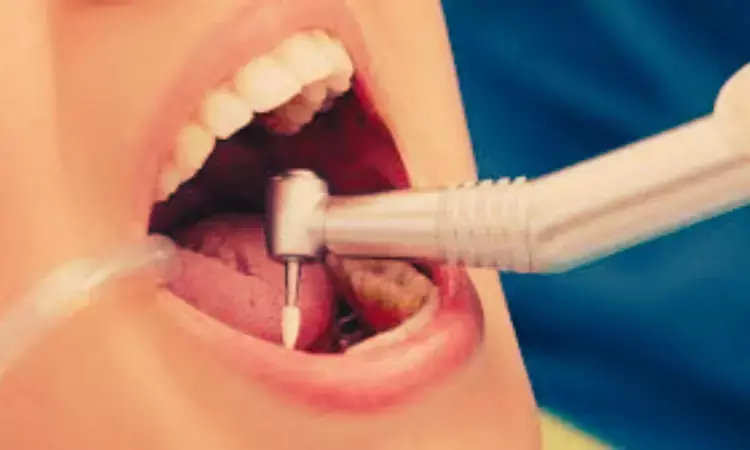- Home
- Medical news & Guidelines
- Anesthesiology
- Cardiology and CTVS
- Critical Care
- Dentistry
- Dermatology
- Diabetes and Endocrinology
- ENT
- Gastroenterology
- Medicine
- Nephrology
- Neurology
- Obstretics-Gynaecology
- Oncology
- Ophthalmology
- Orthopaedics
- Pediatrics-Neonatology
- Psychiatry
- Pulmonology
- Radiology
- Surgery
- Urology
- Laboratory Medicine
- Diet
- Nursing
- Paramedical
- Physiotherapy
- Health news
- Fact Check
- Bone Health Fact Check
- Brain Health Fact Check
- Cancer Related Fact Check
- Child Care Fact Check
- Dental and oral health fact check
- Diabetes and metabolic health fact check
- Diet and Nutrition Fact Check
- Eye and ENT Care Fact Check
- Fitness fact check
- Gut health fact check
- Heart health fact check
- Kidney health fact check
- Medical education fact check
- Men's health fact check
- Respiratory fact check
- Skin and hair care fact check
- Vaccine and Immunization fact check
- Women's health fact check
- AYUSH
- State News
- Andaman and Nicobar Islands
- Andhra Pradesh
- Arunachal Pradesh
- Assam
- Bihar
- Chandigarh
- Chattisgarh
- Dadra and Nagar Haveli
- Daman and Diu
- Delhi
- Goa
- Gujarat
- Haryana
- Himachal Pradesh
- Jammu & Kashmir
- Jharkhand
- Karnataka
- Kerala
- Ladakh
- Lakshadweep
- Madhya Pradesh
- Maharashtra
- Manipur
- Meghalaya
- Mizoram
- Nagaland
- Odisha
- Puducherry
- Punjab
- Rajasthan
- Sikkim
- Tamil Nadu
- Telangana
- Tripura
- Uttar Pradesh
- Uttrakhand
- West Bengal
- Medical Education
- Industry
MA-T Shows Potential as Safer, Effective Root Canal Irrigant compared to sodium hypochlorite: Study

A new study published in the journal of Nature Scientific Reports found that "matching transformation system" (MA-T) has a strong disinfection ability and superior biocompatibility, suggesting it could serve as a promising alternative to traditional irrigants like sodium hypochlorite (NaOCl).
Apical periodontitis arises primarily from bacterial invasion and biofilm formation inside the root canal system. Conventional treatment relies heavily on mechanical cleaning combined with chemical irrigation. However, widely used agents such as NaOCl can damage periapical tissues and exhibit cytotoxic effects on surrounding cells. MA-T, a recently developed chlorine dioxide-based solution, has now been evaluated for its antibacterial performance and cytocompatibility.
The study examined MA-T’s antibacterial activity against both mono-species biofilms (including Enterococcus faecalis, Parvimonas micra, and Fusobacterium nucleatum) and polymicrobial biofilms derived from human plaque samples. Furthermore, an in vitro infected root canal model using E. faecalis simulated real clinical conditions. Researchers assessed bacterial viability using colony counting and confocal laser scanning microscopy (CLSM), while crystal violet (CV) staining quantified biofilm mass.
To ensure biocompatibility, rat osteoblasts and human periodontal ligament fibroblasts were exposed to MA-T and NaOCl, and cell health was measured via ATP level assays and morphological observations under microscopy.
MA-T completely eliminated planktonic bacteria across all tested species. Biofilm viability dropped dramatically (up to a 99% reduction) according to both CFU data and CLSM imaging. Although MA-T significantly reduced bacterial numbers within biofilms, the total mass of the biofilm matrix (as shown by CV staining) remained relatively stable over time, suggesting that MA-T primarily kills bacteria without dissolving the biofilm structure itself.
In the E. faecalis-infected canal system, MA-T achieved a substantial decrease in bacterial load comparable to or exceeding that of NaOCl. The cells treated with MA-T maintained higher ATP levels and displayed normal morphology, while NaOCl-treated cells showed significant ATP depletion and membrane distortion, indicating cytotoxic damage.
Overall, this research suggests that MA-T offers powerful antibacterial performance with superior biocompatibility, positioning it as a strong alternative for root canal irrigation. Future clinical trials are imperative which could revolutionize this innovation in endodontic disinfection to ensure effective sterilization while preserving the health of surrounding tissues.
Reference:
Shimaoka, T., Maezono, H., Ono, S., Asahi, Y., Kawanishi, Y., Klanliang, K., Takahashi, Y., & Hayashi, M. (2025). Application of on-demand aqueous chlorine dioxide solution for non-surgical root canal treatment. Scientific Reports, 15(1), 36215. https://doi.org/10.1038/s41598-025-20131-5
Neuroscience Masters graduate
Jacinthlyn Sylvia, a Neuroscience Master's graduate from Chennai has worked extensively in deciphering the neurobiology of cognition and motor control in aging. She also has spread-out exposure to Neurosurgery from her Bachelor’s. She is currently involved in active Neuro-Oncology research. She is an upcoming neuroscientist with a fiery passion for writing. Her news cover at Medical Dialogues feature recent discoveries and updates from the healthcare and biomedical research fields. She can be reached at editorial@medicaldialogues.in
Dr Kamal Kant Kohli-MBBS, DTCD- a chest specialist with more than 30 years of practice and a flair for writing clinical articles, Dr Kamal Kant Kohli joined Medical Dialogues as a Chief Editor of Medical News. Besides writing articles, as an editor, he proofreads and verifies all the medical content published on Medical Dialogues including those coming from journals, studies,medical conferences,guidelines etc. Email: drkohli@medicaldialogues.in. Contact no. 011-43720751


